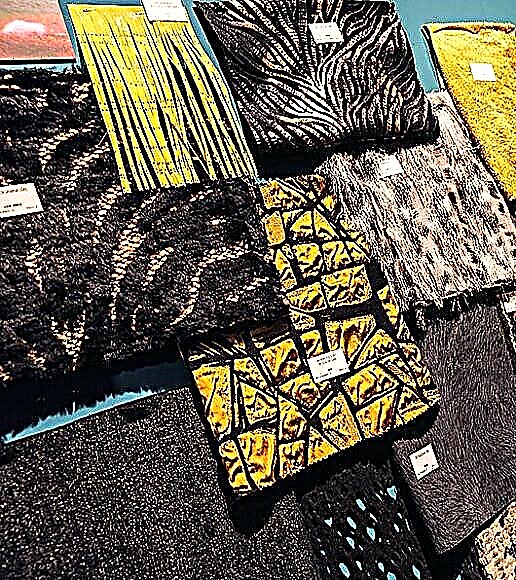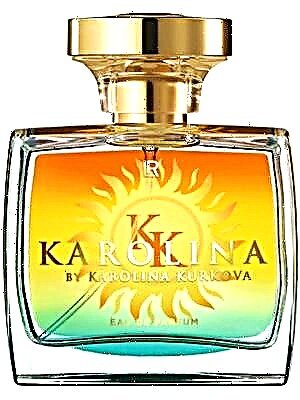Share
Pin
Tweet
Send
Share
Send
In order for the clothes to have an impeccable look and fit well, not only a successful pattern is necessary, but also the correct execution of such a stage in sewing as duplication of product details.

What is duplication, why is it necessary and how to perform this operation correctly - these questions are asked not only by beginning dressmakers. What needs to be done so that, for example, the collar is sturdy and keeps fit like in a purchased shirt or blouse? The answer is simple: you need to duplicate it - iron the gasket!
Duplication of clothing parts ensures their shape stability during operation and maintenance of the finished product, and also gives increased elasticity, eliminates the stretching and deformation of the fabric.
How to duplicate the details of coats and jackets
Usually duplicate details such as cuffs, collar details, board and collar of a jacket or coat, belt, flaps, bodice in bustier dresses, allowances for zipper to avoid waves and other small details of products. And in products from knitted and elastic fabrics: armhole and neck.
Layout plan

As a rule, duplication is performed on all or part of the surface of the part. In Burda patterns, details that need to be duplicated with cushioning adhesive material are grayed out on the layout plan.
All fabrics differ in composition, density and thickness, therefore, adhesive adhesive woven or non-woven materials for duplication of details will need to be selected in accordance with the specific type of fabric. For example, the glue that is suitable for coats is definitely not suitable for silk chiffon. That is why Burda instructions always indicate which gasket is needed for a particular model.

Of course, you can deviate from this recommendation if you are sewing a model from another fabric or if this type of non-woven fabric is not on sale. Then choose duplicate materials suitable for your fabric.
Table of main woven and non-woven spacers non-woven
Decanting duplicate adhesives
Woven cushioning materials can shrink, therefore, before starting to work with them, they need to be decanted. If this is not done, the product may be deformed during operation in places where the parts are duplicated by an un-cushioned cushioning material.Woven cushioning materials are rolled as follows: soaked in warm water, then, without squeezing, allowed to drain and dried in a straightened form. When soaked, the adhesive coating will not dissolve, as it is made on a polymer basis, which melts only under the iron during duplication.
Cutting gaskets
When cutting the gasket, observe the direction of the shared thread. Always lay the parts from the gasket in the same direction of the shared thread as the fabric parts. This is especially important for woven backing materials that are stable in the longitudinal direction and stretch in the transverse.
in the photo duplicated collar details
Parts from the gasket are always cut with seam allowances.
How to duplicate parts correctly, iron the gasket
Before duplicating parts, practice on a piece of cloth to check if the gasket is firmly attached to the fabric and how it holds in shape.Nonwoven pads are always ironed to the fabric from the wrong side of the part. In this case, the gasket should not protrude beyond the fabric, otherwise the adhesive mass will stick to the sole of the iron, and with the next ironing it will fall on the front side of the fabric, from which it will then be impossible to remove it.
When ironing the backing pad, use a flat iron - a regular piece of cotton.

pictured duplicate pocket entry
After ironing the gaskets, the parts are allowed to cool for 20 minutes.
BurdaStyle.ru Duplicate Clothing Tips
For such small parts as a hem and collar, first cut the gasket with large allowances for the seams and iron it to the wrong side of the fabric from which you will cut the part. Then pin the pattern and now cut out the part with the necessary allowances.In order to prevent the transition from the glued part to the non-glued part from the front side of the product from soft and not thick coats, the parts are duplicated with soft non-woven. Before starting work, carry out this procedure on a small piece of cloth. If the transition is not noticeable, duplicate the details safely, if the transition "appears" on the front side - no.
If you have already duplicated the fabric and the transition is visible, try to slightly fluff the edge of the glued non-woven to remove the trace from the border.
For knitted fabrics, there are special thin cushioning materials that maintain the elasticity of parts even after duplication. Since knitwear is different in composition and density, with a smooth or “fluffy” surface, make it a rule - before duplicating parts of a product made of such fabrics, always first try on a shred. If after this procedure the tissue remained plastic and did not lose shape, then the test was successful.
How to choose a non-woven fabric: tips and tricks
What fabrics do not duplicate or duplicate non-adhesive materials
Cloak and jacket fabrics do not duplicate with adhesive materials. But if nevertheless there is a need for this, instead of the usual glue, use a non-glue, such as organza. It is suitable for thin cloak fabrics.If it happened so that, out of ignorance, you duplicated a dense cloak fabric, and subsequently from the front side it went in blisters, do not despair. Just tear off the cushioning material, but do it right:
- iron the raincoat fabric on the front side, the adhesive of the duplicate material will soften under the influence of temperature;
- and only now tear off the glue;
- remove any glue: iron the cloak fabric through the iron. Change the latter to clean until all glue residue has disappeared.
To duplicate details of wild silk, use organza or non-adhesive cushioning materials that are sweeping onto the overlapping area. In addition, low-temperature non-woven fabric is used for ordinary silk fabrics - it is thin and adheres "dry".
Soft jacket fabrics such as boucle, loden, chanel are glued with a thin thread-piercing non-woven fabric, or sewn by hand. They will not add thickness, but they will retain the plasticity and mobility of the fabric. In this case, the fabric will gain stability in the sock, and the product holds its shape.
So, why duplicate clothing details:
- to shape the product and its individual parts;- to maintain the shape stability of the product during operation;
- to protect the sections from stretching, especially the armhole and neck;
- to give resistance to such details as collars, cuffs, in simple terms, so that they do not crumple.
Photo: BurdaStyle.ru; Julia Dekanova
Material prepared by Julia Dekanova
Share
Pin
Tweet
Send
Share
Send



